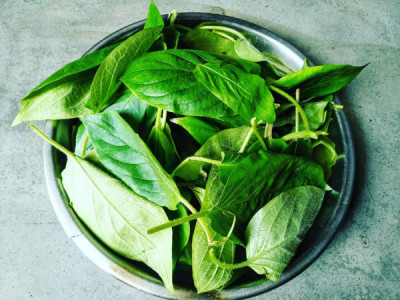What Is Bhedailota Xaak In Assam? Nutritional Benefits And Traditional Uses Explained



In Assamese, "Bhedailota xaak" refers to Skunk vine (Paederia foetida). It's also known by other names like Malabar spinach, Puroi Xaak, and Paduri Lota. The leaves have a distinctive, strong, sulphurous smell. It's a popular leafy green in Assamese cuisine, often used in curries, fritters, and salads, and is known for its digestive benefits.
Rich in vitamins A, C, and K, which support eye health, immunity, and blood clotting.
High in dietary fiber, aiding digestion and maintaining gut health.
Contains essential minerals like calcium, iron, and potassium beneficial for bone strength and overall wellness.
Low in calories, making it a healthy addition to any diet.
Bhedailota Xaak is often cooked simply with mustard oil, garlic, and minimal spices to preserve its natural flavor.
It is commonly prepared as a stir-fry or boiled and served alongside steamed rice.
The greens are sometimes mixed with other xaak varieties in traditional Assamese meals.
It is especially popular during festivals and local celebrations, showcasing Assam’s rich biodiversity.
In summary, Bhedailota Xaak is a nutritious and culturally significant leafy green in Assam, appreciated for its health benefits and flavorful contribution to traditional Assamese cuisine.